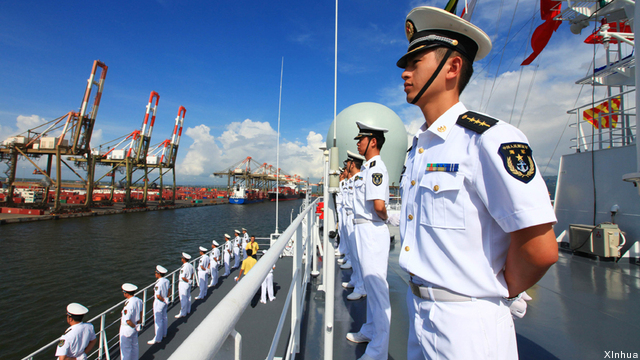
That China is a growing threat — even an “enemy” — is one thing incoming president Donald Trump and the Washington national security establishment agree on. But just how dangerous is China’s increasing military strength and international assertiveness? What painful historical experiences drive Chinese thinking in ways a Westerner might not understand? And what’s the best way to handle China’s rise? 2016 saw major developments that illuminated all these questions, from an international tribunal ruling on the disputed South China Sea to increasing US outreach to not-officially-allied nations like Singapore and Vietnam.
[All this week we’re reprinting some of our best stories of 2016 on the biggest issues: China (today), future warfare, robotics & artificial intelligence, Russia, & the defense policies of Donald Trump.]
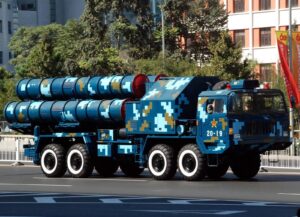
Few Choices For US As China Militarizes South Pacific
Leading Republicans hastened today to denounce China’s deployment of anti-aircraft missiles to the South China Sea. But what can the US actually do about it? The arrival of the sophisticated HQ-9 missiles in the Paracel islands — claimed by Vietnam and Taiwan but occupied by China — is just the latest step in Beijing’s steady extension of military power into the Pacific, and it won’t be the last.
While America reacts, struggling to figure out each move, China is pursuing a long-term strategy. The Chinese have claimed the whole South China Sea, based on the notorious Nine Dash Line drawn on the map by the Chiang Kai-Shek government they ousted in 1949. Now they’re gradually filling in that area with actual capability to control it — and they’d be doing so regardless of what the US was doing.
[click here to read the full story]

What PRC President Is Really Doing; What The Uniform Means (By Heritage’s Dean Cheng)
Chinese leader Xi Jinping’s recent appearance in a military uniform while touring a military command center and the attendant description of him as “commander in chief” of the facility, drew extensive Chinese and foreign media attention. Was his appearance in uniform a reflection of a militarizing China? Was the description of him as “commander in chief” of this new entity a reflection of ongoing political tensions with the military? Unfortunately, those discussions have tended to miss the bigger picture….
What is significant, and merits far more attention and discussion, is the nature of the facility that Xi visited. This Military Commission Joint Command Center (junwei lianzhi zhongxin; 军委联指中心) is a reflection of the increasing emphasis placed upon joint operations in the PLA, and is a physical reflection of one of the major reorganizations that the PLA is currently undertaking.
[click here to read the full story]
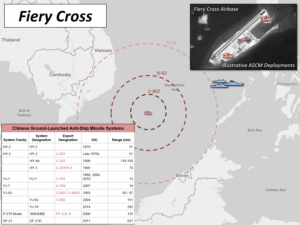
Chinese Ambassador Blasts South China Sea Tribunal
After a UN tribunal ruled stingingly against Chinese territorial claims in the South China Sea, Beijing reacted with its characteristically prickly mix of grandiosity and insecurity. The official Chinese perspective inverts Washington’s worldview so thoroughly it can be hard for Americans to understand: International rules are rigged, US military presence is destabilizing, China rightfully owns the whole South China Sea and is being generous to let its lesser neighbors use it at all.
When China’s ambassador to the US, Cui Tiankai, says benignly that “we are not trying to take back the islands and reefs that have been illegally occupied by others,” he’s referring to almost everything claimed by every other country in the region.
[click here to read the full story]
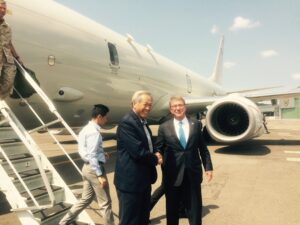
The P-8, Singapore & South China Sea Strategy
Defense Secretary Ashton Carter and his host, Singaporean Defense Minister Ng Eng Hen, made a stark and clear statement to China before the Shangri-La summit began, boarding America’s preeminent sub-hunting and surveillance plane, the P-8 Poseidon.
“How do you like this aircraft?” asked Carter as they boarded the P-8.
“I love this aircraft!” replied Lt. Torrey Plum….
Strategists are particularly excited to have the P-8 flying out of Singapore, which agreed in September to host regular deployments. (There is not a permanent US base, but that’s increasingly the model for our not-technically-alliances in Asia). The long-range, cutting-edge maritime patrol plane operating out of one of the world’s great hubs of maritime traffic is a happy marriage of technology and geography — though not so happy for the Chinese.
[click here to read the full story]
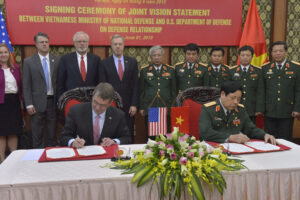
Vietnam Pivots To US With Wary Eye On China: Arms Ban Ends
In many ways, today marks the final exorcism of the Vietnam War as America turns to the much greater challenge of a rising, militarizing China — and as Hanoi seeks just enough US help to balance Beijing without provoking it.
President Obama is in Hanoi and Defense Secretary Ash Carter in New Haven. Yesterday, Obama lifted long-standing restrictions on arms sales to Vietnam. This afternoon, Carter will address Yale University’s first ROTC class to graduate since his alma mater expelled the program during the Vietnam War — the year he arrived as an undergraduate….
Carter assiduously avoided the word “China,” so, naturally, I brought it up. “Nothing we do there is directed at China,” he emphasized, “but there no question that China’s actions there, particularly those over the last year, have heightened concern in the region, and that’s another factor that causes them to work with us.”
[click here to read the full story]
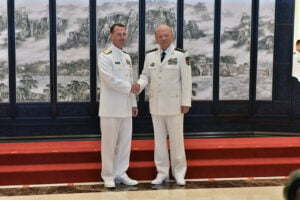
‘We’ve Got To Continue To Engage’ China: CNO Richardson
When it comes to China, “first and foremost, I think we’ve got to continue to engage,” Richardson said this morning at the left-leaning Center for American Progress. The US and China have common interests, such as combatting piracy, which is on the rise in the South China Sea even as it wanes off the Horn of Africa, he said. “(In) areas where we don’t necessarily agree, (such as) destabilizing, provocative types of behaviors in the South China Sea,” Richardson continued, the goal is “to continue to move towards some kind of compromise resolution (and) do everything we can to minimize the risk involved in the relationship.”
Richardson has met with his Chinese counterpart, Admiral Wu Shengli, five times in the 12 months he’s served as CNO, and such persistent dialogue pays off, he argues….All told, “there were dozens of encounters” between the two fleets, he said, which were, “by and large, performed according to a ruleset that had been established” between US and China called the Code for Unplanned Encounters at Sea (CUES).
[click here to read the full story]
GD chief says Navy’s 1 sub buy won’t impact company short term, but out years less certain
The comments from the General Dynamics chief come on the same day President Joe Biden signed the national security supplemental, which includes billions for the sub industrial base.



























